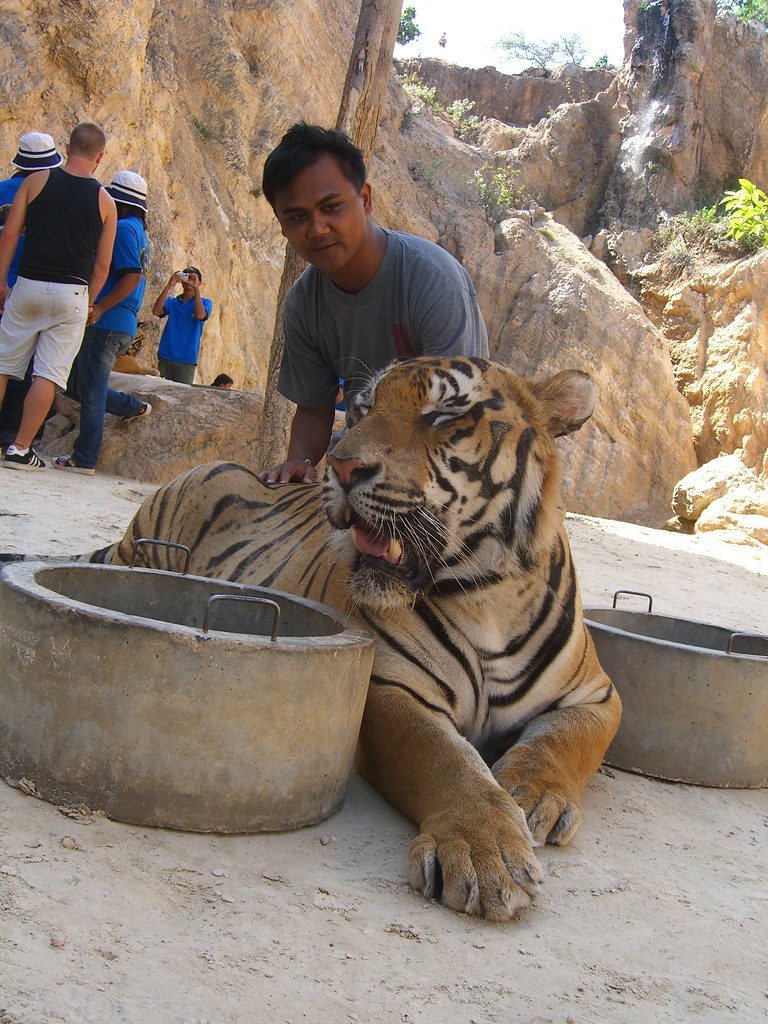When traveling to countries in South-East Asia, particularly Thailand, you may come across tiger entertainment venues that allow tourists to interact with captive animals directly. One of the most popular offers is the chance to take a selfie with a tiger, but other activities may include feeding adult tigers, bottle-feeding tiger cubs or circus-style performances in which tigers perform tricks such as jumping through burning hoops.
While the chance of encountering such a beautiful animal up close may seem tempting, there are several reasons why you shouldn’t visit these attractions.

An example of the type of tiger tourist attraction that should be avoided. Image credit eric molina, CC BY-SA 3.0.
No conservation benefits
Tiger entertainment venues may claim that their profits support tiger conservation, but this is, in truth, rarely the case. The vast majority of these organisations operate purely for commercial profit and actually threaten the survival of wild tigers by stimulating demand for tiger parts in wildlife crime (see below). They may imply the conservation benefit is in the “education & awareness” they create and in breeding tigers for future release but this never happens, and certainly shouldn’t happen from any of the facilities that allow visitor handling of tiger cubs.
Stimulates wildlife crime
Several tiger entertainment venues, such as the Tiger Temple in Thailand, have also been implicated in the illegal trade of tiger parts and products. These practices fuel demand for tiger parts (including tiger skins for decoration or body parts for use in traditional Chinese medicine) and undermine conservation efforts by driving continued poaching of wild tigers.
Animal cruelty
Captive tigers in entertainment venues are not treated well.
Cubs are often separated from their mothers within weeks of being born so they can be hand-raised and bottle-fed by tourists. This is extremely stressful for both cubs and mothers, particularly if you consider that, in the wild, they would stay together for a couple of years. Furthermore, tigers are often confined to small, barren enclosures or cages resulting in significant physical and psychological distress, especially considering that tigers in the wild can roam many kilometers in a single night! Frequent handling and visitor contact in loud environments causes the animals further stress and, in order to perform for tourists, tigers are subjected to cruel training regimes.
How will I know which organisations to avoid?
The simplest advice we can give you is if an establishment offers direct tourist interactions with captive animals (selfies, hugging, feeding) and/or promotes tigers engaging in unnatural behaviors (e.g. tricks or performances), then do not visit.
By not spending your money in tiger entertainment venues you will reduce the profitability of the tiger entertainment industry and help end these cruel practices for good.
Featured image: a chained tiger and man at a Thai tiger temple. These attractions are popular with tourists, but should be avoided by anyone who cares about tigers. Image credit xiquinhosilva, CC BY-SA 3.0.





